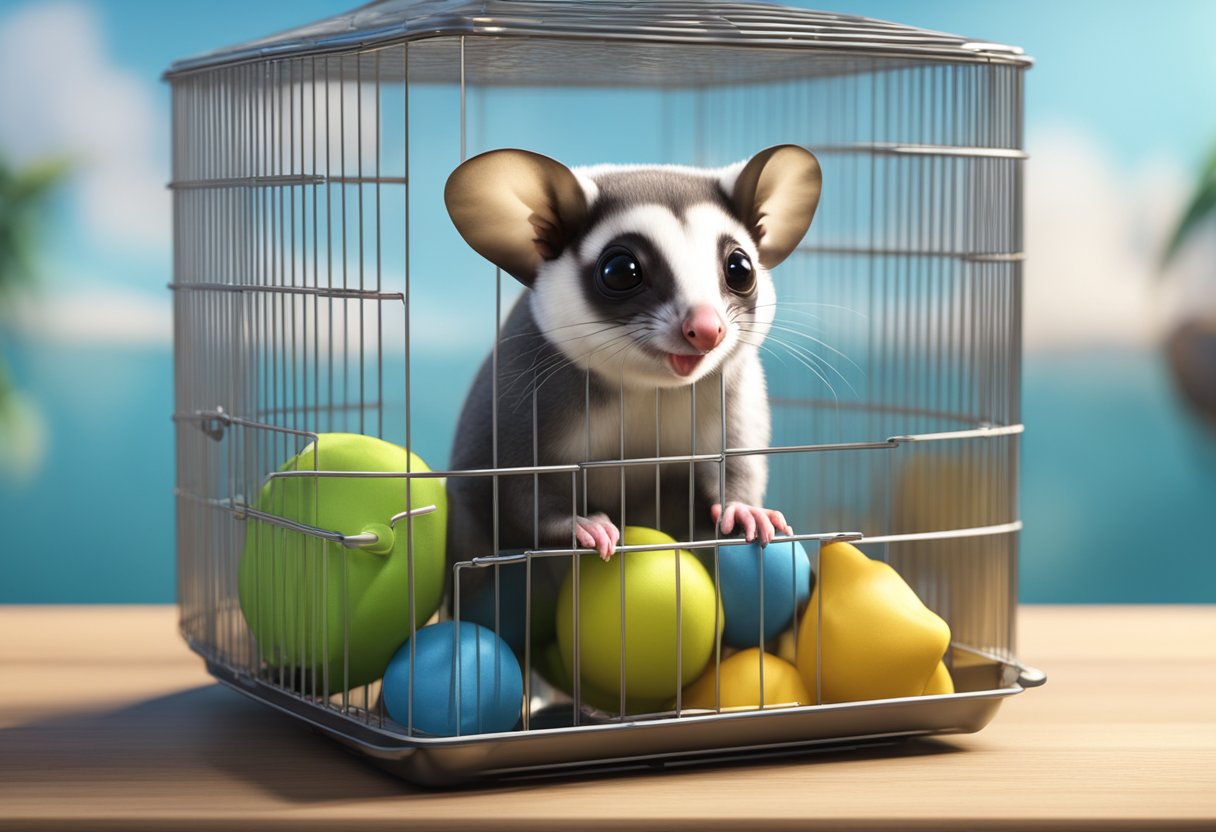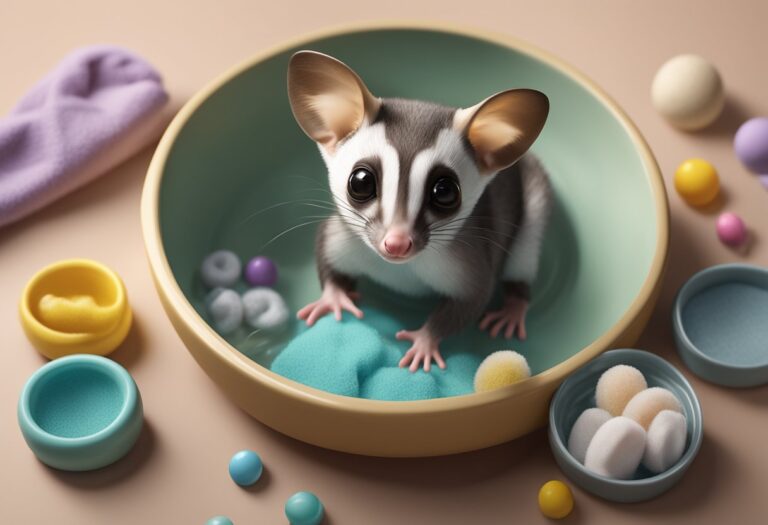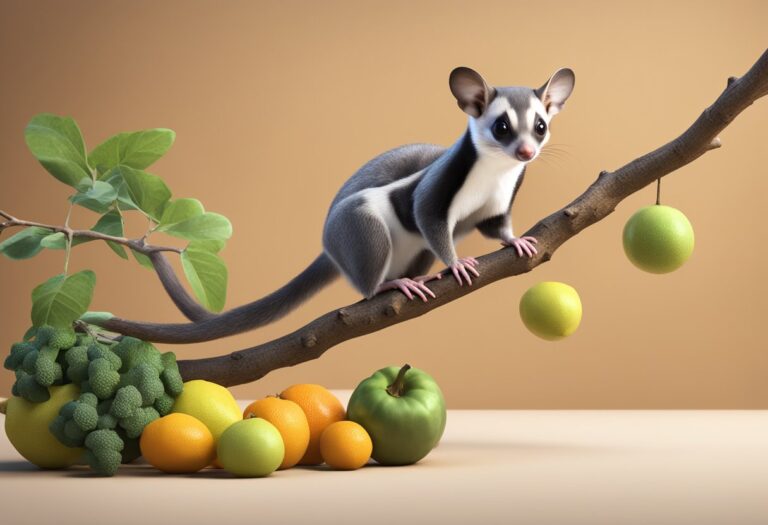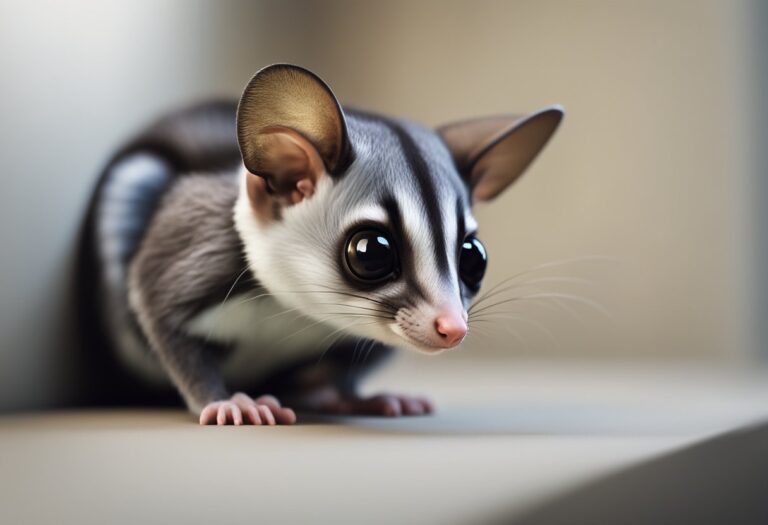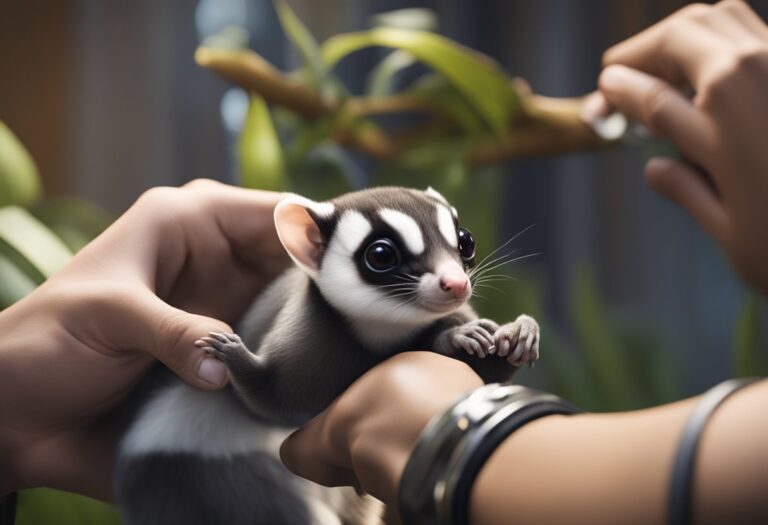Traveling with Sugar Gliders: A Guide for Pet Owners
Did you know that an estimated 1 in every 10 American households now owns a sugar glider as a pet? As these unique marsupials continue to grow in popularity, more and more pet owners are looking to include their beloved companions on their travels. However, navigating the world of traveling with sugar gliders requires special considerations to ensure the safety and well-being of these delicate creatures. This comprehensive guide will provide you with the essential information and practical tips you need to confidently and responsibly bring your sugar gliders along on your adventures.
Whether you’re planning a road trip with sugar gliders, flying with sugar gliders, or even international sugar glider travel, this article has got you covered. From understanding the necessary sugar glider travel requirements and selecting the right sugar glider travel accessories, to ensuring proper sugar glider travel diet and obtaining the required sugar glider travel health certificate, you’ll find all the guidance you need to make your sugar glider’s travels as smooth and stress-free as possible.
Introduction to Traveling with Sugar Gliders
As increasingly popular household pets, sugar gliders are captivating the hearts of many pet owners who wish to include these unique marsupials in their travel plans. However, traveling with sugar gliders requires special considerations to ensure their safety, comfort, and well-being. This section will explore the advantages of bringing sugar gliders along as travel companions, as well as the common challenges that pet owners may face when embarking on adventures with their furry friends.
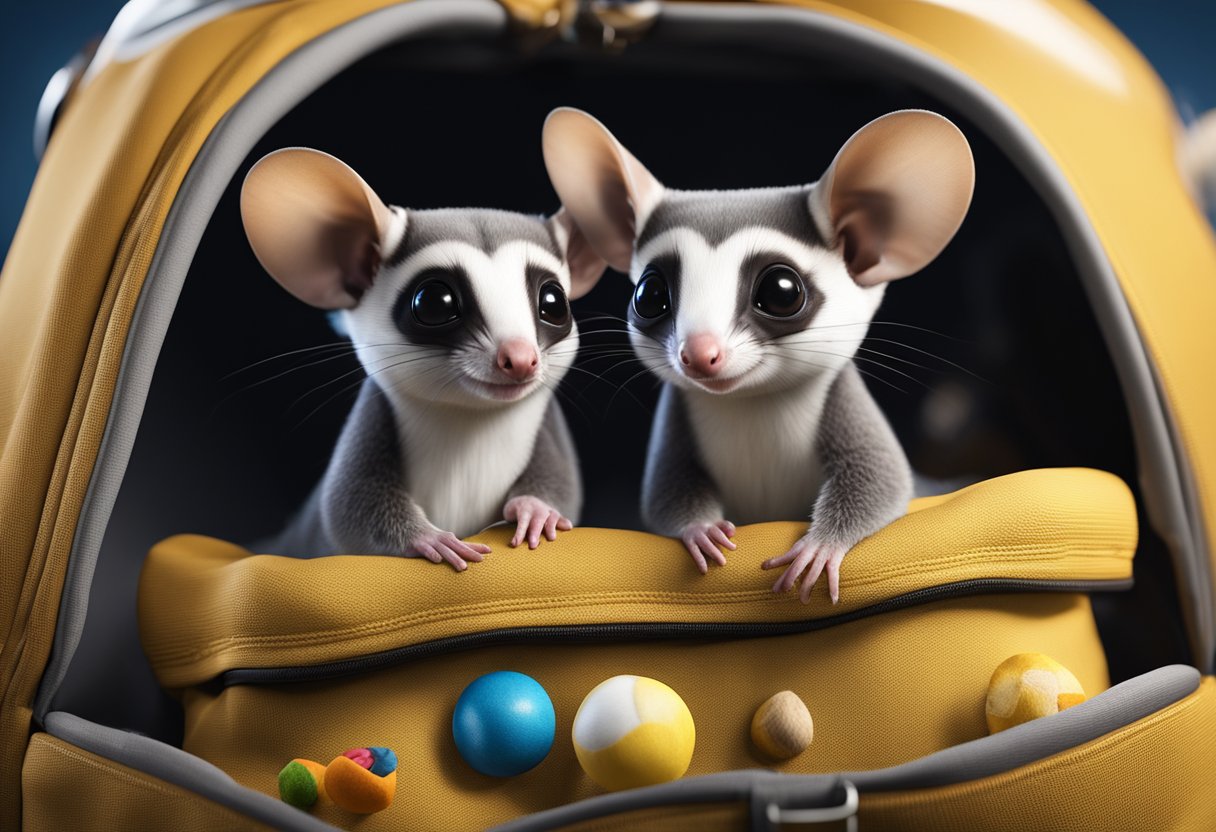
Why Sugar Gliders Make Great Travel Companions
Sugar gliders are curious, intelligent, and highly social creatures, making them delightful travel companions for their owners. Their small size and relatively low maintenance requirements make them relatively easy to transport, while their engaging personalities can provide companionship and entertainment during trips. The benefits of traveling with sugar gliders include their ability to adapt to new environments, their affectionate nature, and their tendency to thrive on the attention and stimulation that comes with exploring new surroundings.
Common Challenges of Traveling with Sugar Gliders
Despite the many benefits of bringing sugar gliders along on trips, traveling with these animals also presents unique challenges that pet owners must be prepared to address. Ensuring the safety and comfort of sugar gliders during transport, maintaining their specialized dietary needs, and adhering to various legal requirements and regulations can all pose obstacles for pet owners. Additionally, the stress of unfamiliar environments and disruptions to their routine can impact the health and well-being of sugar gliders, requiring careful planning and vigilance from their human companions.
Traveling with Sugar Gliders
Transporting sugar gliders requires careful planning and the right equipment. Whether you’re embarking on a road trip or flying with your furry companions, selecting the appropriate sugar glider travel carriers, maintaining a comfortable sugar glider travel environment, and providing proper sugar glider travel diet are crucial for ensuring their safety and well-being during the journey.
Choosing the Right Travel Carrier
The choice of a suitable sugar glider travel carriers is paramount when traveling with these delicate creatures. The carrier should be well-ventilated, spacious enough for the sugar gliders to move around comfortably, and equipped with secure closures to prevent escapes. Opt for carriers made of durable, lightweight materials that can withstand the rigors of travel while providing ample airflow.
Maintaining a Comfortable Environment
Ensuring a comfortable sugar glider travel environment is essential for minimizing stress and keeping your sugar gliders happy and healthy during the trip. Regulate the temperature and humidity levels within the carrier, and provide ample bedding and nesting materials to create a familiar and cozy atmosphere. Regularly check on your sugar gliders and be prepared to make adjustments as needed to maintain their optimal comfort.
Providing Proper Nutrition on the Road
Maintaining a balanced sugar glider travel diet is crucial for keeping your sugar gliders energized and nourished during the journey. Pack a variety of their favorite foods, including fresh fruits, vegetables, and high-protein snacks, and ensure they have access to clean water at all times. Carefully plan your food supplies to meet their dietary needs throughout the trip, and be prepared to adjust their diet if necessary.
| Travel Essentials | Recommended Items |
|---|---|
| Sugar Glider Travel Carriers | Well-ventilated, secure carriers made of durable, lightweight materials |
| Sugar Glider Travel Environment | Temperature and humidity control, ample bedding and nesting materials |
| Sugar Glider Travel Diet | Variety of fresh fruits, vegetables, and high-protein snacks, clean water |
By carefully considering the unique needs of your sugar gliders and preparing the appropriate travel accessories and resources, you can ensure a safe and stress-free journey for both you and your furry companions.
Legal Requirements for Sugar Glider Travel
Before embarking on a journey with a sugar glider, pet owners must familiarize themselves with the legal requirements and regulations governing the transportation of these unique animals. This section will explore the necessary permits, health certificates, and other critical documentation that may be required, both for domestic and international travel. Additionally, it will provide an overview of the specific policies and restrictions imposed by airlines, enabling sugar glider owners to plan their air travel in compliance with industry standards.
Permits and Health Certificates
Depending on the destination and mode of transportation, sugar glider owners may be required to obtain special permits and health certificates. Sugar glider travel permits are often necessary for interstate or international relocation, ensuring compliance with regulations set forth by state or federal authorities. Similarly, sugar glider travel health certificates may be mandatory, verifying the animal’s good health and vaccination status, particularly for air travel.
Obtaining the appropriate permits and health certificates can be a crucial step in ensuring a seamless and legal travel experience for sugar gliders. Pet owners should research the specific requirements for their destination and mode of transportation well in advance, allowing ample time to gather the necessary documentation.
Regulations for Air Travel
When it comes to flying with sugar gliders, pet owners must adhere to the strict sugar glider air travel regulations imposed by various airlines. These regulations typically include size and weight limitations for pet carriers, as well as specific procedures for boarding and in-flight care.
Some airlines may restrict the number of sugar gliders allowed per passenger or require the animals to travel in the cabin rather than in the cargo hold. Understanding and complying with these policies is essential for a stress-free and compliant air travel experience for both the pet owner and the sugar glider.
Road Trips with Sugar Gliders
For pet owners planning to travel with their sugar gliders by car, this section offers valuable insights and tips. Whether embarking on a cross-country adventure or a weekend getaway, preparing for sugar glider road trips and ensuring their comfort during sugar glider car travel is essential for a successful and stress-free journey.
Preparing for Long Car Rides
When it comes to sugar glider road trips, providing a secure and comfortable travel carrier is of utmost importance. The carrier should be large enough to allow the sugar gliders to move around freely yet small enough to fit securely in the vehicle. Maintaining the appropriate temperature and humidity levels within the carrier is also crucial, as sugar gliders are sensitive to environmental changes. Pet owners should pack plenty of their sugar gliders’ favorite snacks and water to ensure they remain hydrated and well-fed throughout the journey.
Finding Pet-Friendly Accommodations
As sugar gliders are often considered exotic pets, it is essential for pet owners to research and plan ahead when it comes to sugar glider pet-friendly accommodations. Many hotels and motels may have restrictions or additional fees for guests traveling with animals. By researching and booking sugar glider pet-friendly accommodations in advance, owners can ensure their sugar gliders have a comfortable and stress-free place to rest during overnight stays along the way.
| Destination | Accommodations | Pet Policies |
|---|---|---|
| Yellowstone National Park | Lake Yellowstone Hotel | Allows pets up to 50 lbs, additional fee applies |
| Las Vegas, Nevada | MGM Grand Hotel | Accepts pets of all sizes, no additional fee |
| Seattle, Washington | Hotel Vintage | Allows pets up to 80 lbs, $75 pet fee per stay |
Flying with Sugar Gliders
Traveling with sugar gliders by air requires careful navigation of airline policies and regulations. Sugar glider owners must be familiar with the various restrictions and requirements imposed by different carriers to ensure a smooth and stress-free flight experience for their beloved pets.
Airline Policies and Restrictions
When it comes to flying with sugar gliders, not all airlines have the same policies. Some carriers may have size and weight limitations for pet carriers, while others may have specific documentation requirements, such as health certificates or travel permits. It is crucial for pet owners to research the policies of their chosen airline well in advance to avoid any unexpected complications.
Many airlines also have specific procedures for boarding and in-flight care of sugar gliders. For example, some may require the pet carrier to be stowed under the seat during takeoff and landing, while others may allow the carrier to remain on the owner’s lap. Understanding these details can help sugar glider owners plan their travel accordingly and ensure their pets’ safety and comfort throughout the journey.
Tips for a Stress-Free Flight
To minimize stress for both the sugar gliders and their owners during air travel, there are several practical tips to consider. Firstly, it is essential to choose a well-ventilated, secure carrier that meets the airline’s size and weight requirements. Providing familiar bedding, toys, and treats can also help the sugar gliders feel more at ease in their temporary home.
Additionally, owners should make sure to pack any necessary food, water, and medications, and plan for regular breaks to allow the sugar gliders to stretch and relieve themselves. Maintaining a calm and soothing presence during the flight can also go a long way in keeping the sugar gliders relaxed and content.
By being informed about airline policies, equipping themselves with the right gear, and following best practices for in-flight care, sugar glider owners can ensure a stress-free and enjoyable air travel experience for their furry companions.
International Sugar Glider Travel
Traveling with sugar gliders across international borders introduces an additional layer of complexity due to varying import and export regulations, as well as potential quarantine requirements. Pet owners must navigate these often-complex procedures to ensure a seamless and compliant international sugar glider travel experience.
Import and Export Requirements
Before embarking on an international journey with a sugar glider, pet owners must familiarize themselves with the specific import and export regulations of their destination country. This may involve obtaining the necessary permits, health certificates, and other documentation to legally transport their sugar glider across borders. Failure to comply with these requirements can result in delays, fines, or even the refusal of entry for the animal.
Quarantine Procedures
In addition to import and export requirements, some countries may also mandate a sugar glider quarantine period upon arrival. This process is designed to ensure the health and safety of the local sugar glider population, as well as to protect the animal from potential exposure to new diseases or environmental stressors. Pet owners should research the quarantine protocols in place for their destination and make the necessary arrangements to comply with these regulations.
By being informed and prepared, pet owners can navigate the complexities of international sugar glider travel and ensure a seamless and compliant experience for their beloved companions.
Sugar Glider Travel Accessories
Ensuring the comfort and well-being of sugar gliders during travel requires the right equipment and accessories. From secure travel carriers to specialized feeding solutions, pet owners must equip themselves with the essential sugar glider travel gear to make their furry companions feel at ease on the road or in the air.
Essential Travel Gear
At the heart of a successful sugar glider travel experience is a well-designed, sugar glider travel carrier that provides ample ventilation, temperature control, and a secure environment. Pet owners should also consider investing in accessories like portable food and water dishes, as well as temperature and humidity-regulating devices to maintain the optimal environment for their sugar gliders throughout the journey.
Toys and Enrichment for Travel
To keep sugar gliders mentally stimulated and entertained during travel, it is essential to pack a variety of sugar glider travel toys and enrichment materials. These can include hanging perches, chew toys, and puzzle feeders that challenge the gliders’ natural curiosity and problem-solving skills. By providing these engaging activities, pet owners can help minimize stress and ensure a positive, enriching travel experience for their sugar gliders.
| Essential Sugar Glider Travel Gear | Sugar Glider Travel Toys and Enrichment |
|---|---|
|
|
Sugar Glider Travel Health and Safety
Ensuring the well-being and safety of sugar gliders is paramount when traveling with these beloved pets. Pet owners must be vigilant in monitoring their sugar glider’s health and behavior during the journey to quickly identify and address any issues that may arise. From physical indicators to behavioral cues, understanding the signs of stress or distress can help owners provide their furry companions with the care and support they need.
Monitoring Your Sugar Glider’s Well-being
Regular check-ins and close observation are crucial when traveling with sugar gliders. Pet owners should closely monitor their sugar glider’s travel health, looking for signs of dehydration, changes in appetite, or any unusual physical symptoms. Behavioral changes, such as increased restlessness, excessive vocalizations, or a reluctance to interact, can also signal that the sugar glider is experiencing travel stress or discomfort.
By staying attuned to their sugar glider’s needs and responding promptly, owners can ensure their pets remain comfortable and content throughout the sugar glider travel experience. Maintaining a calm and soothing environment, providing familiar toys and enrichment, and offering frequent breaks and playtime can all contribute to a positive travel experience for the sugar glider.
Dealing with Emergencies on the Road
Unexpected sugar glider travel emergencies can occur, and pet owners must be prepared to respond appropriately. From minor injuries to sudden illness, owners should have a plan in place to address any medical issues that may arise while on the road or in the air.
Keeping a well-stocked first-aid kit, including essential supplies like gauze, antiseptic, and emergency contact information for nearby veterinarians, can help owners swiftly address any sugar glider travel health concerns. In the event of a more severe emergency, owners should not hesitate to seek immediate veterinary care, prioritizing the safety and well-being of their sugar gliders above all else.
By staying vigilant, proactively addressing any issues, and being prepared for unexpected situations, pet owners can ensure a safe and enjoyable sugar glider travel experience for their beloved companions.
Conclusion
In conclusion, traveling with sugar gliders requires careful planning and a deep understanding of the unique needs and challenges these animals face when on the move. By following the comprehensive guidelines and practical tips outlined in this guide, pet owners can confidently and responsibly include their sugar gliders in their travel plans, ensuring a safe, comfortable, and enjoyable experience for both the animals and their human companions.
As sugar gliders continue to grow in popularity as household pets, this information will empower owners to expand their horizons and explore the world alongside their beloved companions. The key takeaways for successful sugar glider travel include selecting the appropriate travel carrier, maintaining a comfortable environment, providing proper nutrition, understanding legal requirements, and prioritizing the health and safety of the animals.
Whether embarking on a road trip or a flight, pet owners will be equipped with the knowledge and tools necessary to make their sugar gliders’ travel experience a seamless and stress-free one. By embracing the summary of traveling with sugar gliders, owners can forge unforgettable memories and deepen their bond with these unique and captivating creatures.

